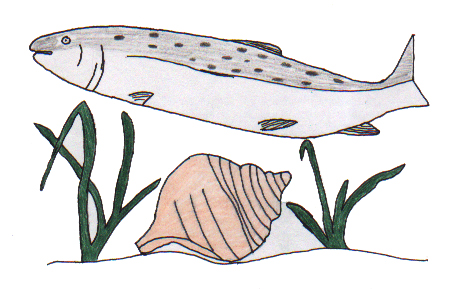 This collection of student work is from Frank Keim's classes. He wants to share these works for others to use as an example of culturally-based curriculum and documentation. These documents have been OCR-scanned and are available for educational use only.
This collection of student work is from Frank Keim's classes. He wants to share these works for others to use as an example of culturally-based curriculum and documentation. These documents have been OCR-scanned and are available for educational use only.Special | A | B | C | D | E | F | G | H | I | J | K | L | M | N | O
P | Q | R | S | T | U | V | W | X | Y | Z | ALL
Dolly Varden:
Dolly Varden
(Salvelinus malma) (lqallugpik) Dolly Varden are found in most coastal waters of Alaska from Southeastern to the tip of the Aleutian Chain and into the Bristol Bay area. A young Dolly Varden has about 8 to 10 dark oval blotches on the dorsal suface and numerous red to orange spots on its sides. The mature males become bright red on the lower body surface, and the lower fins become reddish-black with white along the leading edges. Males develop an extended lower jaw which hooks upward. A hook also forms in the females, but is less developed. The Dolly Varden belongs to a group of fish called chars. They spawn in streams, usually during the fall in October and November. The female, depending on the size, may deposite 600 to 6000 eggs. When the female is ready to deposit her eggs, the male moves to her side and spawning begins. The sperm and eggs are released simultaneously into the redd or gravel nest. The eggs develop slowly in the cold water temperatures. The eggs may hatch in March, four to five months after fertilization. The young Dolly Varden stay in streams before beginning their first migration to the sea in their third or fourth year. At this time they are about five inches long. This migration usually occurs in May or June. At ages five and six they may reach 12 to 16 inches long and weigh from 0.5 to 1 pound. It is doubtful that many more than 50 per cent of the Dolly Varden live to spawn a second time. Few Dolly Varden appear to live longer than eight years. The maximum size for most Dollys is between 15 and 22 inches and from 1 to 3 pounds.
Cheryl Hunter | |
|




